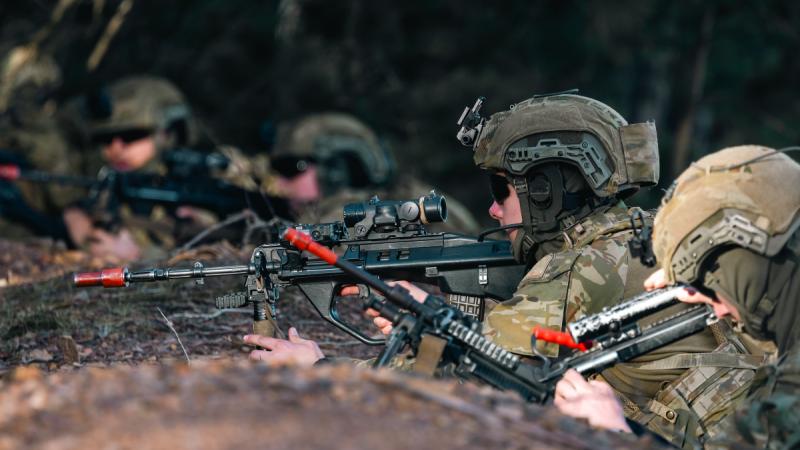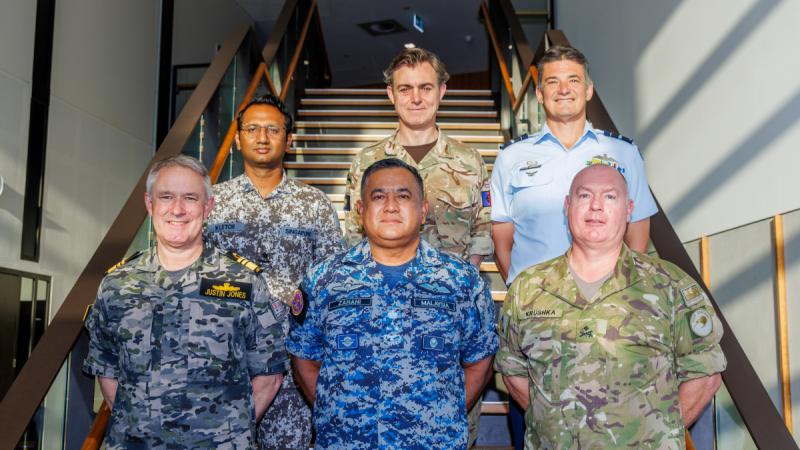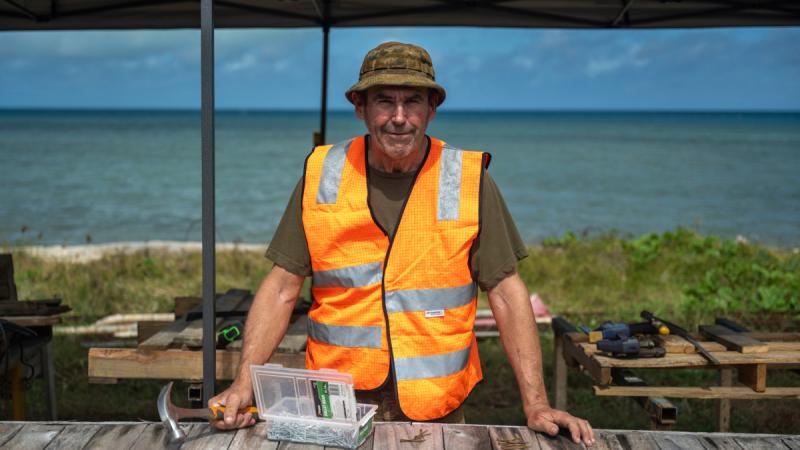11 June 2025
With the rain hammering down, Corporal Tuilakepa 'Fiji' Fakraufon is responding to rapid-fire technical questions as part of a post-activity review.
Just minutes earlier, the forward arming and refuelling point (FARP) team leader had given the thumbs-up signal to the crew of an Army Tiger armed reconnaissance helicopter.
It’s a visual cue to the pilot that the FARP operators have finished their work and it’s safe for the aircraft to depart the temporary landing pad in the Northern Territory bush.
The FARP serials were part of Exercise Griffin Walk, a 1st Aviation Regiment activity held at the Kangaroo Flats Training Area south of Darwin in April.
Like a Formula One pit crew, the FARP operators work quickly and efficiently to rearm the aircraft, refuel it and tackle any minor repairs, before sending it on its way.
Corporal Fakraufon is still learning the ropes on the Tiger, having joined the regiment just three months earlier in a transfer from the 5th Aviation Regiment.
Soon he and the other FARP operators will be applying the training and experience to the new AH-64E Apache.
During the next two years, the ADF’s 22 European-built Tigers will be phased out to make way for the American-made Apache, with the first batch of 29 ordered expected to arrive later this year.
The switch to the Boeing attack helicopter is aimed at maximising interoperability between the ADF and US military.
For Army Aviation, it’s the end of an era, something not lost on the men and women who fly the Tiger and its ground support personnel.
“It’s a privilege to work on this aircraft before it gets retired,” Corporal Fakraufon said.
'The skills that we are training and developing on Tiger are the same skills we’re going to need to have on Apache.'
FARP operator Trooper Madison Vaggelas, who got to train on the Apache during Talisman Sabre 2023, is keen to see it in the ADF’s livery.
“I looked forward to coming and working on them [Tigers] before they leave and we get the Apache. They’re really good,” Trooper Vaggelas said.
A product of the Cold War, the Tiger was originally intended as a tank destroyer, but the design morphed into that of a multi-role attack helicopter.
Tiger pilot Captain Mario Wilsch is among those eager to get behind the controls of the new helicopter.
“It’ll be phenomenal. I’ll be here until the end of Tiger, so the next couple of years, but it’ll be really interesting to go across to a different platform,” Captain Wilsch said.
The transition, however, is not without a few complexities.
As part of the Apache acquisition program, the 1st Aviation Regiment will relocate from Darwin to Townsville. Its 161 Reconnaissance Squadron has already made the move to North Queensland.
162 Reconnaissance Squadron, which comprises pilots, ground crew and aviation operations support specialists, will continue to fly the Tigers from Robertson Barracks until it's retired.
Commanding Officer 1st Aviation Regiment Lieutenant Colonel Matthew Sherry said the unit faced some big changes, but exercises like Griffin Walk helped smooth the way.
“The proficiency built on Tiger doesn’t disappear when we retire [it],” Lieutenant Colonel Sherry said.
"The skills that we are training and developing on Tiger are the same skills we’re going to need to have on Apache."
A $700-million works program will support the introduction of the Apache and relocation of 1st Aviation Regiment.


